What we learned from Rory McIlroy during his historic career Grand Slam-winning season – and how you can apply it to your game.
How Rory manages on-course nerves
On the morning of the playoff that would determine the winner of the 2025 Players Championship, Rory McIlroy was nervous.
Competing against J.J. Spaun, who had one PGA Tour win to his name, McIlroy had just a three-hole aggregate playoff between him and his 28th PGA Tour title. But even though he’d been in this position many times before, McIlroy said that as he addressed his tee shot on the first playoff hole, it was “the most nervous I’ve been in a long time”.
His very human admission illustrates that managing big moments on the golf course isn’t about not being nervous, it’s about learning the skills to handle those nerves.
Although McIlroy was nervous, he birdied that first playoff hole and went on to win the Players Championship.
After the playoff, McIlroy said he thought feeling nervous was a good thing.
“People say pressure is a privilege, and it really is. You want to feel like that on the course,” McIlroy said. “That’s why I spend the time that I do practising and trying to master my craft, that you get yourself in those positions to see what you’re made of.”
Instead of running from that feeling of nervousness, McIlroy reframed it into a positive thing: that he was lucky to be feeling it, and that he knew how to handle it. With that nervous feeling often comes negative thoughts. Even McIlroy has those devilish little thoughts slide into his mind when he’s playing.
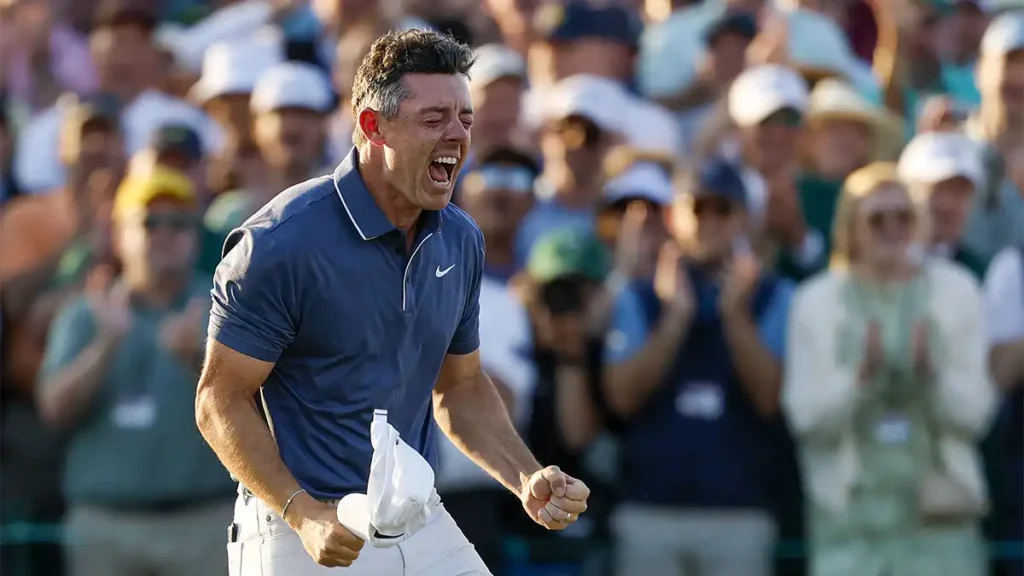
“Walking from the 16th green to the 17th tee today, I could see myself hitting it in the water, right? That’s something that crosses your mind, and it’s like, OK, how do I replace that thought with a better one and visualise and get myself into the moment?” McIlroy said. “I’ve practised hard at that, and definitely getting better at it.”
McIlroy doesn’t ignore those feelings of nervousness, those negative thoughts. He doesn’t get frustrated with himself for having them. Instead, he quiets them by making positive thoughts louder.
“I just think you have to try really hard to make those positive thoughts just a little stronger and a little more powerful than the negative ones,” McIlroy said. “We all get negative thoughts, but it’s how do you deal with those and how do you reframe and replace those with what you want to see and what you want to do.”
Sports psychologist Dr Deborah Graham, who has worked with many tour pros – notably, Fred Couples – says that McIlroy is right, the negative thoughts are going to happen no matter how good you are.
“We all have negative thoughts and they can escalate tension and reduce focus quickly if not managed early,” Graham said in a text exchange.
Dr Graham has players do thought and body checks often, so they’re aware when tension creeps into their swing. If they get the physical cues of feeling rushed or tight, then they check their thoughts and note the existence of any of those negative thoughts. Once those thoughts have been identified, the next step is to start thinking positive thoughts, which Graham calls “champion thoughts”.
She works with her students on creating a list of these thoughts so that when they need to call on a champion thought while they’re on-course, they have several at the ready.
“For example, when a player walks to a difficult tee shot like 17 and feels the tension build, identify the negative average thought and replace it with a pre-planned champion thought, which is almost always related to something you can control,” Graham said.
“In this example, it could be to catch the ‘water’ thought and bring a well-rehearsed thought of what you can control like, ‘definite target and great tempo’ or repeat a simple feel thought over and over, like ‘smooth back, smooth through’ to push out the negative.”
Try this in your own game. If you’re able to do it successfully, you might find a boost of confidence, as McIlroy did.
“I think that will stand for me, feeling like that and being able to hit the golf shots that I need while your stomach is sort of not feeling great and your legs are a little shaky and your heart rate is racing,” McIlroy said.

The recipe for Rory’s clever ‘three-quarter’ shot, explained
With the winds gusting during both Sunday at the Players Championship and in the rain-delayed Monday playoff, Rory McIlroy hit a pair of clinical short iron shots into the middle of TPC Sawgrass’ dangerous 17th green.
The shots weren’t traditional low knockdowns, but they were quite obviously not full-speed pitches either. They both launched with a slightly flatter flight and then rises in the wind, but not so much that they lifted into the air uncontrollably. Crucially, because of the reduced amount of backspin on the ball, it rose through the air without much left or right curve
The 83-foot apex of the shot [above] is high by mere mortals’ standards, but not particularly when you consider McIlroy is consistently one of the highest ball hitters on the PGA Tour (his apex is currently in the top 10 on tour).
Turns out it’s a kind of new-ish shot that McIlroy started deploying that week, as he said after his Players Championship victory: “I have this little ‘three-quarter, three-quarter shot’, I call it. It’s a three-quarter backswing with three-quarter speed. It’s a shot that I’ve always had with the wedges, but I’ve been reluctant to use it with, like, 9-iron, 8-iron, 7-iron down. But this year I’ve gotten more into using that shot with some of those lower clubs like the 9-iron on 17, the 8-iron at the last today.”

A quick aside, while I love this shot, I’m not crazy about the name. Feels like there’s some work to be done there. I’m also bad at naming things, but with the help of AI, these were some decent options:
- The 56er (because three-quarters of three-quarters is 56 percent)
- The Ulster Knockdown
- The Holywood Horizon Hugger
- The Royal County Downer
- The Rory Reducer
Either way, as Rory says, the recipe for the Rory Reducer (I kinda like it!) is simple:
- Take more club
- Three-quarter length backswing
- Swing with 75 percent speed
It works particularly well for Rory not just because he hits the ball high, but because he boasts one of the fastest swing speeds (also inside the top 10). So, by double-dipping by using both a slower and shorter backswing, it all but ensures his ball won’t balloon into the air on him.
“It’s a shot I’ve become really comfortable with,” he says.
The takeaway for you
Most golfers aren’t in a desperate need to lower their ball flight, even in the wind, because they’re not hitting it high enough to begin with. But when the time does come to go low, McIlroy’s former coach, Pete Cowen, once told me the easiest route:
“The simplest way to reduce spin and height is to reduce speed,” he said. “Club up and swing softer.”
The formula which Rory uses to do that is the same for the rest of us. If you want the ball to fly lower, club up and swing slower. As the old cliche goes: when it’s breezy, swing easy.

Rory’s right arm
A lot of good golfers chase a lot of width on the backswing, which can be beneficial because it creates a big, powerful stretch. But when you overdo it, as Golf Digest’s No.1-ranked coach in America, Mark Blackburn explains, it can cause your right arm to stay too straight.
That can keep your right shoulder high and, in McIlroy’s case, get his hands deep and across the line. That’s why during the offseason, he focuses on this takeaway move.
After Pebble Beach earlier this year, McIlroy explained a little more why: “I want to get my right arm and right shoulder more externally rotated on the way back. I feel like I keep my right elbow in front of my body at the top of the backswing. It’s a right-sided sort of takeaway feel. Then from there, it will hopefully stop the club from getting across the line. That’s the change I was trying to make. I have a big shoulder turn, so the club will probably always point right of the target for me. I just feel like over the past year it got a little bit too pronounced, so I’m just trying to tease it back into position where it’s a little more in line at the top”
As McIlroy says, his goal is to keep his right arm a little more externally rotated, meaning slightly more twisted [above above].
That helps keep his right elbow a little softer and more in front of his body, putting the club less across [above]. It means that the club simply re-routes less in transition, which makes timing it all up a little easier.
These changes seemed to stick in his golf swing for the remainder of 2025. The returns were, as we know, career-defining. McIlroy was back to striping it, and the club now looks much more similar to where it was in 2014 compared to the past few years. If there is a big miss in there, we’ve yet to see any signs of it. It simply looks like a subtle upgrade on an already elite move.

Rory’s interesting new driving-range training aid
It’s technically off-season time for most players, but McIlroy hasn’t stopped working, even ahead of his time Down Under for the Australian Open.
A few weeks earlier, however, while playing in the DP World Tour’s Hero India Championship, the career Grand Slam winner was spotted working hard on another new(ish) drill. Let’s break it down really quick.
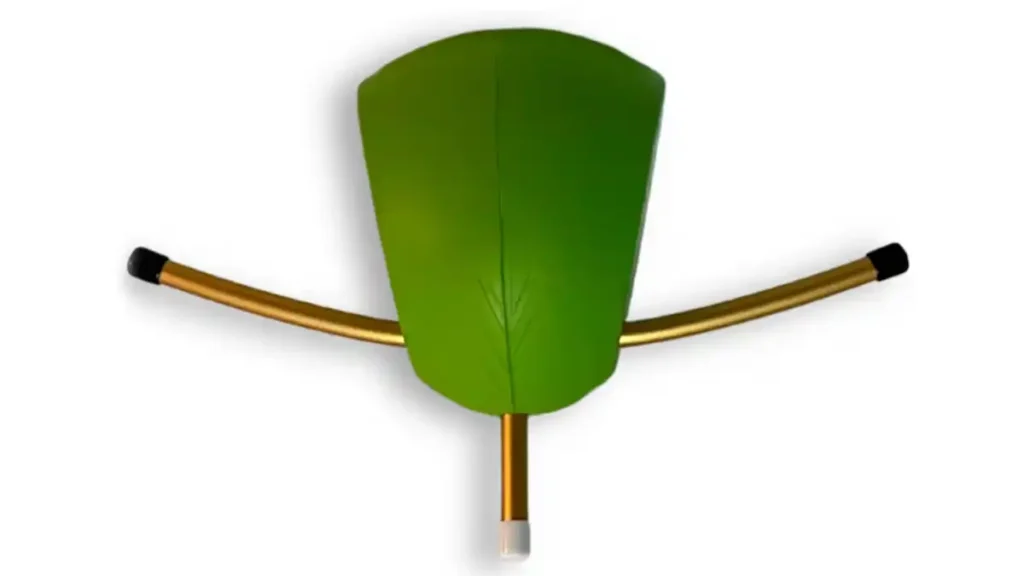
What’s Rory using?
It’s a training aid called The Connector by Sure Golf. It’s kind of a ball with different grooves and sticks coming out of various sides that’s designed to be placed in your arms as you swing.
Why is Rory using it?
McIlroy’s long-time tendency is to extend his arms out on the backswing and keep his right arm high as he does it. This may work for some golfers, but as he discussed with Golf Digest last year, when this happens it can cause his arms to get flat and his club to get across at the top of his backswing, which can create left and right misses.
How does it help?
McIlroy is doing his same takeaway check drill, but adding in The Connector helps do a few things:
- It keeps his right arm closer to his body during the swing
- It keeps his forearms level (and avoids his right arm getting too high)
Once he dials in his arm structure just the way he wants on the takeaway, he can then turn everything up to the top – and usually plays well because of it.
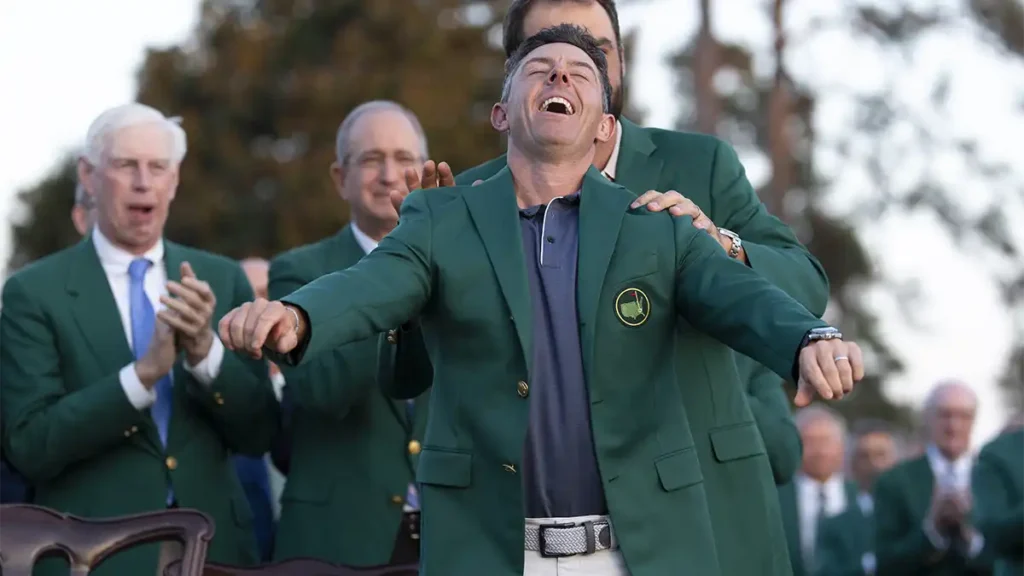
Think you could hit Rory McIlroy’s Masters-clinching shot? Think again
It doesn’t really sound so difficult. A perfect lie in the fairway, 110 metres from the hole, gap wedge in hand and a backstop that will funnel anything up to 10-ish paces long back down towards the cup. There’s hardly any breeze; maybe a breath of left-to-right wind.
Pretty easy right? PGA Tour pros average 20 feet, 2 inches on their approaches from this range (125 yards), hitting the green at an 80 percent clip, according to Shot Scope, which has tracked more than 400 million golf shots.
None of those 400-plus million data points, though, account for the fact that this seemingly simple, 110-metre shot is the approach shot into the 18th hole at Augusta National and par is required for our “hypothetical” player to win the Masters and complete the career Grand Slam. On his 11th try. That’s right, our not-so-hypothetical player is actually Rory McIlroy, whose average proximity from 125 yards in the fairway is just more than 22 feet.
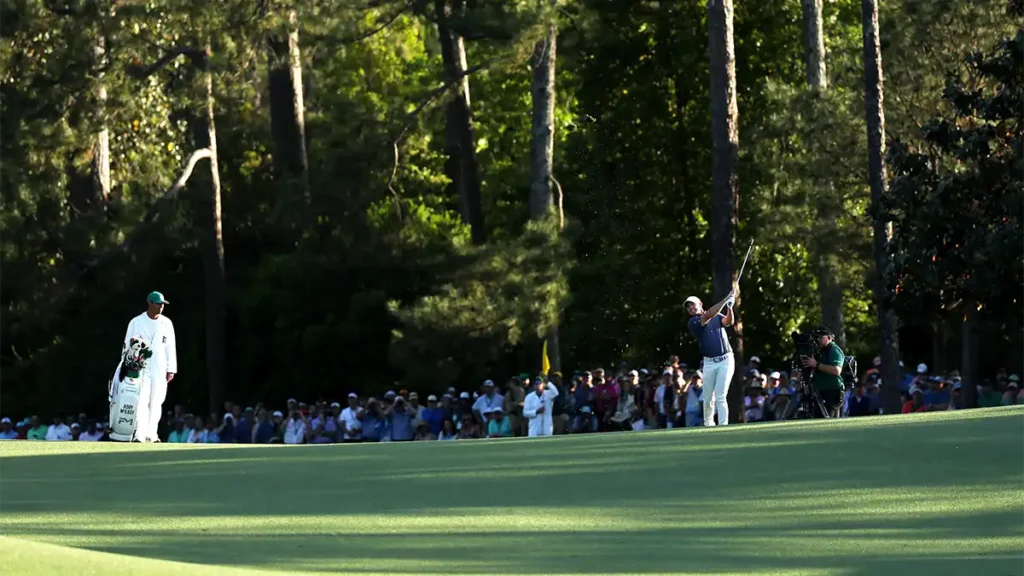
As you know by now, McIlroy’s approach on the 72nd hole ended up about 60 feet from the hole in the right greenside bunker and he failed to get up and down to save his par and ended up in a playoff with Justin Rose. There are no mulligans in professional golf, but McIlroy more or less got one on the first playoff hole, when his tee shot came to rest in nearly the same spot as it did in regulation, 125 yards from the hole. This time, McIlroy hit it to roughly three feet and finished the job with a birdie.
That’s what the data says was probable, right? For a tour pro, sure. But how about for a scratch golfer? A 15-handicapper?
A scratch player will hit the green 62 percent of the time from 125 yards, with an average proximity of 38 feet. That’s probably good enough to make par, but Shot Scope data tells us that 83 percent of all three-putts have a first putt distance of more than 32 feet.
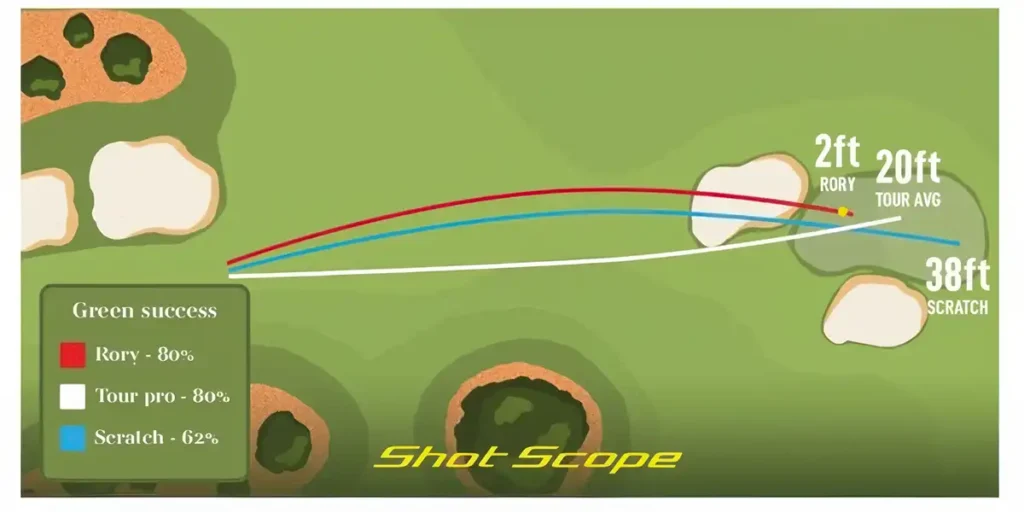

A 15-handicapper hits the green a hair less than a third of the time from 125 yards, averaging about 72 feet from the hole, per Shot Scope data. They need nearly four strokes, on average, to finish the hole from that spot in the fairway. And when they miss the green, they get up and down from greenside bunkers just less than one in five times. That number rises to about 37 percent for scratch players, but it’s still a far cry from tour average, which is just less than 59 percent. McIlroy, to close the loop here, averages better than 65 percent from greenside bunkers.
So, yeah, you could hit the shot that set up Rory’s triumph, but it’s much more likely you’d hit the one that almost cost him the green jacket.
Main photograph by Ramsey Cardy/getty images



